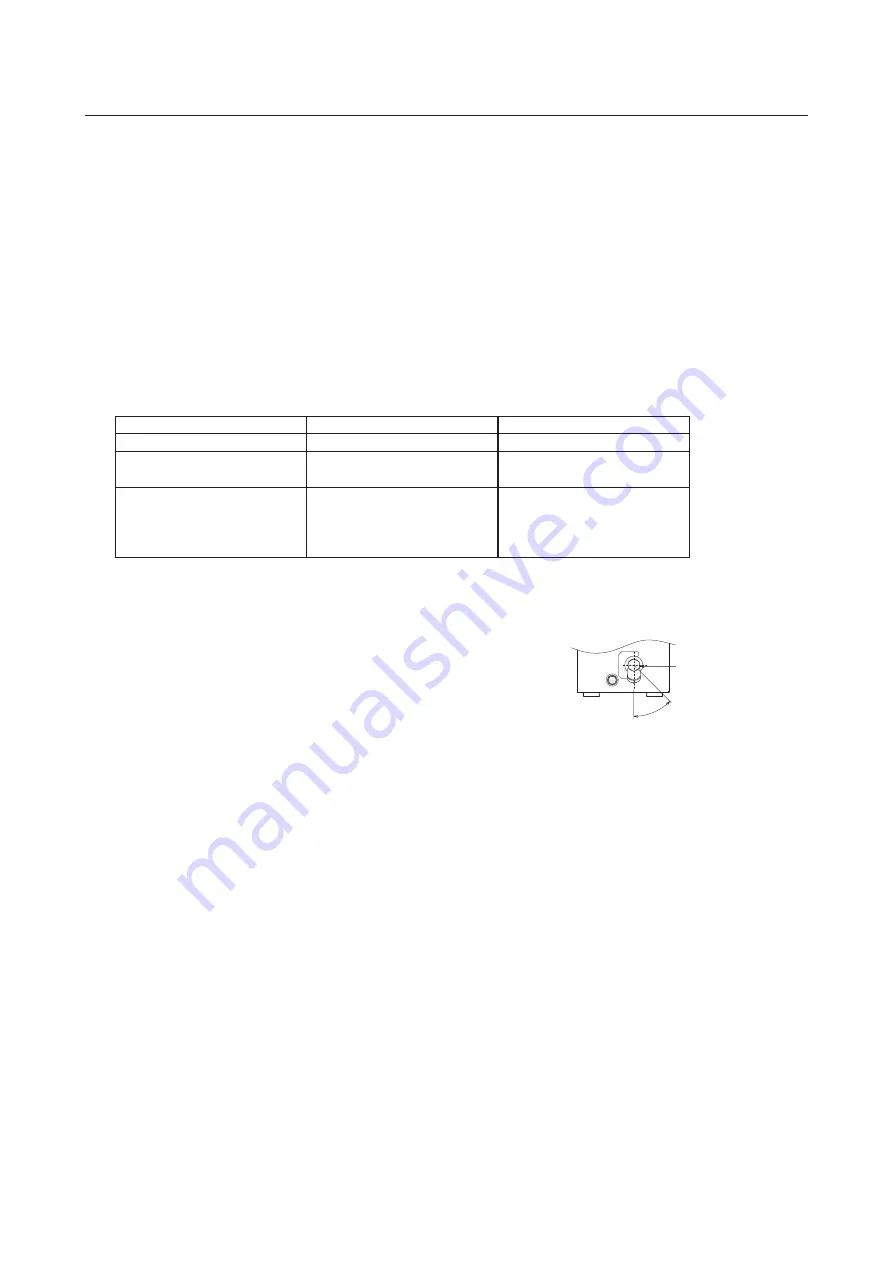
- 60 -
(1)-1 Caution for water pipe installation
Consider the following when designing and installing a water piping system.
•
Do not use steel pipes as water pipes.
-
Copper pipes or stainless steel pipes are recommended.If iron pipes are used in the existing system, do not connect
a new circuit to the old one. Keep the existing and new circuits separate.
•
Light pipes are similar to other air-conditioning pipes, however, please observe the following precautions during installation.
•
Before a long period of non use, purge the water out of the pipes and thoroughly let them dry.
•
Use a closed water circuit.
•
When operating the unit, add brine to the circulating water to prevent it from freezing. To use brine in the system,
DipSW 1-10 must be set to ON.
•
When installed in a low-ambient temperature environment, keep the water circulating at all times. If that is not
possible, purge the water out of the pipes completely.
•
Do not use the water used for this unit for drinking or food manufacturing.
•
When the ambient temperature is 0 ˚C or lower during stop operation, keep the water circulating at all times, or
purge the water out of the pipes completely.
Model
Water inlet
Water outlet
PWFY-P100VM-E-BU
PT 3/4 Screw
PT 3/4 Screw
PWFY-P100VM-E1-AU
PWFY-P100VM-E2-AU
PT 3/4 Screw
PT 3/4 Screw
PWFY-P200VM-E1-AU
PWFY-P200VM-E2-AU
*1 When the attached expansion
joints are installed.
PT 1 Screw*1
PT 1 Screw*1
(2) Selecting a water pump
Use a pump that is large enough to compensate for the total water pressure loss and to supply sufficient water to the unit.
(3) Installing the strainer
•
Install the strainer at the angle of 45˚ or less as shown in [Fig. IV 3.(3).1].
•
Install the supplied strainer at the water inlet.
(4) Precautions during installation
•
Use the reverse-return method to insure proper pipe resistance to each unit.
•
To insure easy maintenance, inspection, and replacement of the unit, use a proper joint, valve, etc. on the water
intake and outlet port. In addition, be sure to install a strainer on the water intake pipe. (In order to maintain the heat
source unit, a strainer on the circulating water inlet is necessary.)
* An example of the heat source unit installation is shown in [Fig. IV 3.(5).1].
•
Install a suitable air vent on the water pipe. After sending water through the pipe, be sure to vent the excess air.
•
Condensed water may form in the low-temperature sections of heat source unit. Use a drainage pipe connected to
the drain valve at the base of the unit to drain the water.
•
Install a back flow-prevention valve on the pump and a flexible joint to prevent excess vibration.
•
Use a sleeve to protect the pipes where they go through a wall.
•
Use metal fittings to secure the pipes, and install them so that they have maximum protection against breakage and
bending.
•
Do not confuse the water intake and outlet valves.
•
This unit doesn’t have any heater to prevent freezing within tubes. When the water flow is stopped on low ambient,
take out the water from tubes.
•
The unused knockout holes should be closed and the opening of refrigerant pipes, water pipes, power source and
transmission wires should be filled with putty and so on to prevent from moisture or the invasion of insects. (field
construction)
•
Wrap some sealing tape around the screw part to prevent water leakage.
•
Wrap the sealing tape as follows.
1. Wrap the joint with sealing tape in the direction of the threads (clockwise), and do not let the tape run over the edge.
2. Overlap the sealing tape by two-thirds to three-fourths of its width on each turn. Press the tape with your fingers
so that it is pressed firmly against each thread.
3. Leave the 1.5th through 2nd farthest threads away from the pipe and unwrapped.
•
Hold the pipe on the unit side in place with a spanner when installing the pipes or strainer. Tighten screws to a torque of 50 N.m.
•
Water pipes can get very hot, depending on the preset temperature. Wrap the water pipes with insulating materials
to prevent burns.
•
On the PWFY-P200VM-E1-AU or PWFY-P200VM-E2-AU model, install the expansion joint (accessory) at the inlet
after installing the strainer, and outlet.
(A) Y-type strainer
(A)
45°
[Fig. IV 3.(3).1]
















































